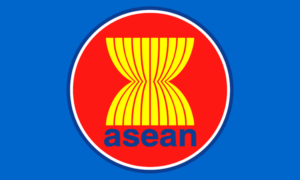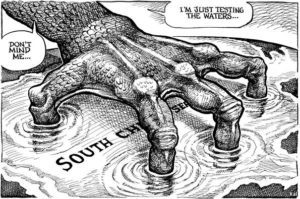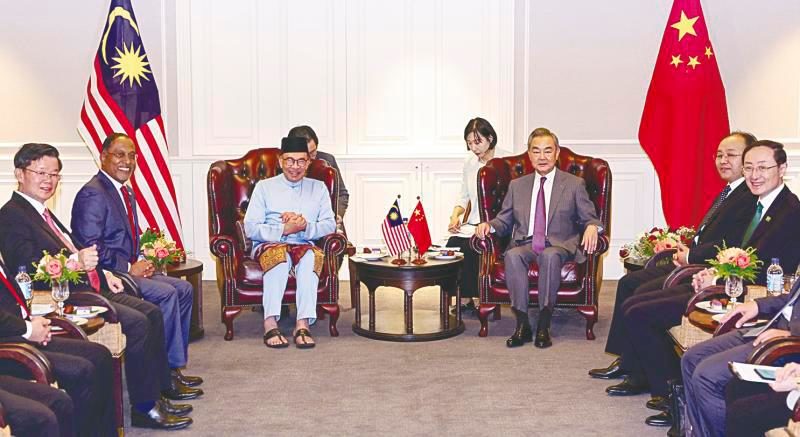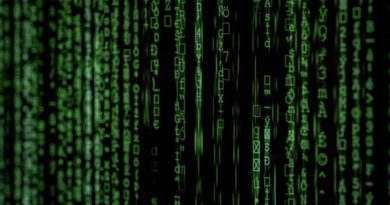OP ED OPINION | ASIAN GEOPOLITICS | KUALA LUMPUR- Beijing’s scramble for friendshoring
“Beijing realises the significance of Singapore and Kuala Lumpur’s long-term support for its regional role and leadership. This includes in legitimacy and a commitment to soft power.
.
This comes amid the growing tension with the US and strained situation in the South China Sea, and notably the recent water cannoning incident with the Philippines.

The trip to Cambodia, Malaysia and Singapore is to ensure that security and economic returns to Beijing are maintained.
Asean has been China’s biggest trading partner since 2020. According to data from Fudan University’s Green Finance and Development Centre in Singapore, Malaysia and Cambodia were among the top targets for the Chinese Belt and Road Initiative (BRI) in the past two years.
China is now facing one of its most serious economic downturns and weakening prospects of post-pandemic recovery.
It faces the brunt of Western embargoes on technology and critical sectors, alongside the increasing ineffectiveness of its dual circulation economic approach.
Additionally, its friendshoring with the Global South, BRICS (Brazil, Russia, India, China and South Africa) and the de-dollarisation movement has led to a fresh scramble to secure regional support and build trust.
Beijing’s latest economic and trade data reflects the growing futility of its pushback against the West’s comprehensive encirclement in terms of economic containment, energy and technology.
It will try to ensure economic integration in the region is not undermined and dictated by the US, and that its influence will prevent the overtures of the West in this region.
Beijing realises the rising collective resistance from Western powers against its actions in the South China Sea, Taiwan Strait, Indian Ocean and the Pacific Islands.
This is evident in the expansion of the Quad’s (Quadrilateral Security Dialogue) collaborative hard power initiatives and the increased effectiveness of Aukus (Australia, the UK and the US), potentially utilising Australia’s expansive geography for testing hypersonic missiles to counter China’s growing influence.

Additionally, the ongoing Malabar exercise involving all four Quad members, taking place in Australia, further underscores these dynamics.
The trip to Singapore and Malaysia will demonstrate Beijing’s commitment to the stability and peace of the region.
Beijing realises the significance of Singapore and Kuala Lumpur’s long-term support for its regional role and leadership. This includes in legitimacy and a commitment to soft power. This is exemplified through their role in offering economic and developmental security, facilitated by Beijing’s initiatives, such as BRI and the Regional Comprehensive Economic Partnership.
Beijing is cognisant of both Malaysia and Singapore’s wariness on its increasing hard power postures in the region, which may push both to seek closer defence and security ties and affiliation with the US and the West either through enhancement of bilateral defence partnerships or in strengthening current or exploring new multilateral security partnerships, including FPDA (Five Power Defence Arrangements) or the expansion of Quad and the creation of Aukus friendly joint training and support initiatives.

Any new fears triggered by Beijing’s actions may derail the dependence and positions of both countries on China, especially when the competition for both countries’ strategic geopolitical and geostrategic assets has intensified.
From rare earths to food security and semiconductor and supply chain resilience, both remain complementary factors in completing the full circle of a total defence and security architecture, with Singapore being seen as having the greater risk of being more inclined to switch to a full alignment with the US.
With Singapore being the most affiliated with the US, in terms of military presence and the long-held dependence on the US for its security assurances, the city-state is high on the priority list for Beijing in engaging in more strategic trust building.
This is coupled with Singapore’s less reliance on China for its economic importance as compared with Malaysia and Cambodia, and its growing role in the regional security architecture.
Singapore serves as a vital support and supply point for any potential full-blown conflict in South China Sea or Taiwan.
The Aukus base in Perth will provide a shorter response time for the West while Singapore remains the vital platform for the US in its Freedom of Navigation exercises in the South China Sea and Taiwan Strait.
Singapore took on the logistical support role for US forces in the Western Pacific just as the Subic Bay Naval Base and Clark Air Base in the Philippines were being shut down since the 1990s.

The city-state also complements the strategic return of the renewed expansion of the Enhanced Defence Cooperation Agreement with Washington, which will see the strategic presence of US power in the most direct counterbalancing locations to Beijing’s intent in the region.
The 1951 Mutual Defence Treaty with the US remains the pinnacle of Manila’s security fallback.
The Camilo Osias navy base in Santa Ana and Lal-lo airport, both in Cagayan province, and Camp Melchor Dela Cruz in Gamu, Isabela province and the island of Balabac off Palawan, provide Manila with the much-needed hard power boost and will strengthen America’s second front capacity in case of a Taiwanese invasion, and provide needed support for Seoul and Tokyo.
Singapore acts as the containment of the domino effect in acting as a barrier against potential Chinese submarine warfare capacity and in serving as the support base for the potential blockade of Malacca Strait in wartime.
The same support is needed for the critical chokepoints of the Lombok and Sunda Straits, and in providing cover for Northern Australia.
The 2019 renewal of a three-decade-old pact between the US and Singapore that grants US forces access to the Lion City’s naval and air bases portrays the country’s importance, especially in serving as the connecting point for the West’s maritime extended strategy from the Indian Ocean to the Pacific in running through the South China Sea.
Under the renewed agreement, the US will have access to Singapore’s naval and air base facilities until 2035. The first renewal of the pact in 2005 granted the US access to the facilities until 2020.

US Navy ships, including nuclear submarines and aircraft carrier groups, are frequent visitors to the city state’s Changi Naval Base, which serves as a refuelling and resupply point for American forces in the Western Pacific.
For Cambodia, Beijing will seek to reaffirm an already ingrained strong partnership, and the essence of that will be the upcoming Ream base.
Phnom Penh will need to maintain robust economic dependence on Beijing, and remains the bulwark of Beijing’s symbol of dominance in continental Southeast Asia.
The Ream base offers greater room for Beijing in the Gulf of Thailand, where the base is expanding its reach, posing a threat to Thailand and Vietnam.
The region remains critical for Beijing in its larger power postures in the Pacific, Indian Ocean and Australasia, and it remains the centre of a growing powder keg that will make or break Beijing’s regional and global ambitions.
The momentum of the West’s derisking and friendshoring efforts has now turned the tide against Beijing’s steady progress on shoring up its support, and this region is the key platform for its Taiwan ambition and its long-term 2049 Rejuvenation Dream that seeks to challenge the US and replacing it as the global military and economic superpower in a new China-centric order.
.
EDITOR IN CHIEF
 Memento Maxima Digital Marketing
Memento Maxima Digital Marketing
@[email protected]
SPACE RESERVE FOR ADVERTISTMENT
.
The writer is a Foreign Affairs and Security Strategist at Universiti Malaya. Comments: [email protected]




 CHINA Foreign Minister Wang Yi’s travel to three countries is a strategic engagement stint to shore up its public and diplomatic image, deepen trust, foster strategic mutual dependence and regain soft power and geopolitical influence in the region.
CHINA Foreign Minister Wang Yi’s travel to three countries is a strategic engagement stint to shore up its public and diplomatic image, deepen trust, foster strategic mutual dependence and regain soft power and geopolitical influence in the region. Memento Maxima Digital Marketing
Memento Maxima Digital Marketing







